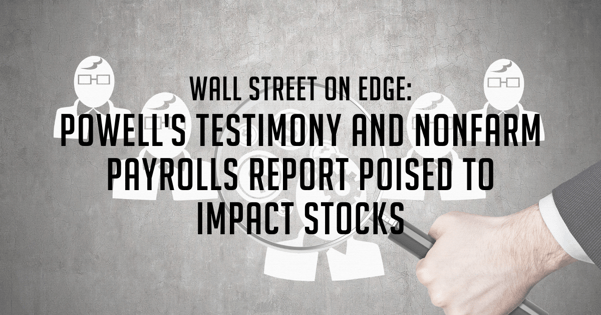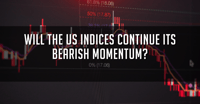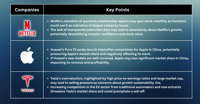This week, investors are eagerly anticipating the release of the key nonfarm payrolls report, which will provide insight into whether January's strong employment numbers were an anomaly or the start of a sustained trend. While we anticipate that the February report will show strong employment figures, it may not fully reflect the ongoing softening of the labour market.
Last week, stocks struggled as Treasury yields rose but regained momentum on Friday as yields fell slightly from their highs. The benchmark 10-year Treasury yield reached a peak of 4.09% before dropping below 4% on Friday. This is because rates move inversely to bond prices.
On Tuesday and Wednesday, the Fed Chairman is scheduled to testify before the Senate Banking, Housing, and Urban Affairs Committee and the House Financial Services Committee. This testimony will likely impact the markets, as investors tend to react strongly to the Chairman's comments.
While Powell's testimony is important, the market is likely to be more focused on the February employment report, which will show whether the Fed's policies are cooling the economy and the labour market.
Traders expect an additional 225,000 jobs in February after a surprisingly high 517,000 jobs were added in January. In addition to the employment report on Friday, there is a full calendar of economic data, including wholesale trade on Tuesday and international trade, job openings data, and the Fed's beige book on the economy on Wednesday.
Investors will also be keeping an eye on potential revisions to January's jobs data. If the February data falls in line with estimates or even below, any positive revisions to January's report could boost the markets.
The strong January jobs report, with reports of strong retail sales and higher inflation, led the futures market to price in a higher terminal rate for Fed rate hikes, which now stands at close to 5.5% by October.
Meanwhile, China's leaders have set a modest economic growth target of around 5% for the year, suggesting less of a growth boost to the world economy. This news could hurt the Australian currency. Premier Li announced the GDP target at the start of the annual meeting on Sunday, which was lower than economists had expected. Despite the rebound in consumer spending and industrial output, China's leaders have opted not to implement large stimulus measures to spur further growth.
Fullerton Markets Research Team
Your Committed Trading Partner














